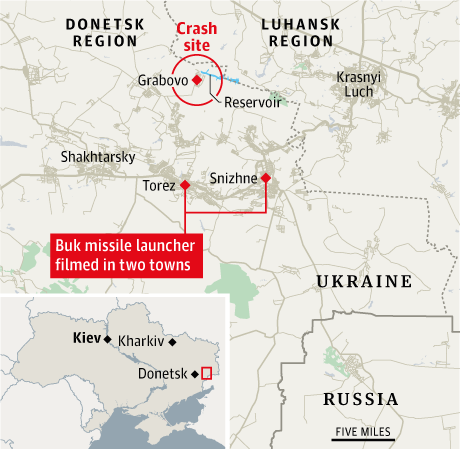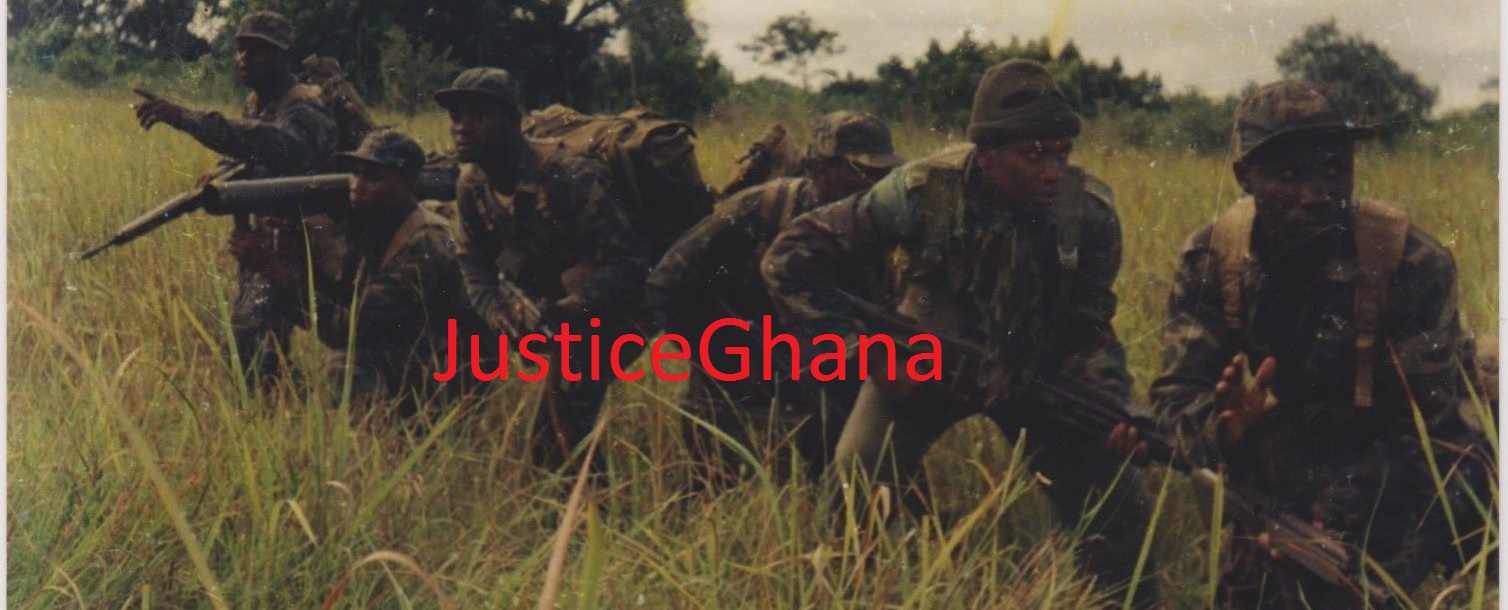MH17: world's anger at Russia grows as bodies pile on to train at crash site
- Details
- Category: Uncategorised
- Created on Sunday, 20 July 2014 00:00
 MH17: world's anger at Russia grows as bodies pile on to train at crash site
MH17: world's anger at Russia grows as bodies pile on to train at crash site
20 July 2014
Experts fear clues as to why Malaysia Airlines plane was brought down could be lost for ever as chaos at scene persists
Shaun Walker in Torez
Masked, hooded men ran along the platform nervously waving their guns, as the large grey door to one of five train carriages was levered open. A ghoulish stench poured out; inside the glint of shiny black body bags piled in a heap was visible. A group of international monitors from the OSCE peered in briefly, and then the door was swung shut again.
That this event was seen as a great breakthrough in the cleanup of the MH17 air disaster only went to show what a grimly farcical mess it had been up to now.
As politicians, investigators and relatives of the dead across the world expressed anger at the Kremlin for not forcing pro-Russia rebels to offer more cooperation, there had yet to be any serious examination of the crash site. Experts suggested vital clues to how the Malaysia Airlines Boeing was brought down could have been lost for ever as the site continued to be a free-for-all three days after the tragedy, which took 298 lives.

The small OSCE mission on the scene is made up merely of monitors. Not a single international aviation expert or investigator has visited the site, as evidence disappears. Until Sunday lunchtime, nobody even knew where the body bags from the site had been taken, with dark rumours swirling. Even now, the OSCE monitors have had to take the word of the local emergency services that 196 bodies have been found so far.
"We have not been able to count them as that would be too difficult in this situation," said Alexander Hug, the deputy chief of the OSCE mission, as he was circled by rebels with guns.
Michael Bociurkiw, the spokesman for the mission, added: "Going inside the wagons is impossible without special equipment. The stench is very, very bad."
The OSCE monitors are fully at the mercy of the rebels, and were only told of the fate of the bodies on Sunday: "We are waiting for the rebels to call us and tell us what we can do," one had said over breakfast in a Donetsk hotel earlier in the day. "They are heavily armed and we are unarmed, so we don't have much of a choice."
At the crash site, the rebel fighters who had been stationed there and barred access on previous days had gone, but chaos still reigned. Volunteer miners and local emergency workers continued to find bodies in the corn and sunflower fields throughout the day on Sunday, and stacked them by the side of the road in thick plastic bags: black for more or less whole bodies, and green for small parts. By the afternoon at least 18 freshly bagged corpses lined the road.
There was a complete lack of control over access to the site. The world's television media seemed oblivious to the irony of criticising the chaos while contributing to it – wading through fields to get a better shot with little regard for the human and material debris below. Sky had to apologise after one of its reporters rummaged through a suitcase on camera for effect.
Elsewhere, items had been moved and piled up by the search teams on the side of the road – suitcases stacked next to each other; and three football biographies, of Kevin Keegan, Ron Atkinson and Nigel Clough, lined up in a neat row.
Nevertheless, despite the loud accusations of looting by locals, it is unclear how widespread this has been. Dozens of eminently lootable items – watches, new pairs of shoes and even somehow unharmed bottles of duty-free alcohol visible from the road lay untouched on the ground. At one site, locals had even brought furry toys and small candles in tribute. It was unclear if and how relatives would ever be able to take possession of the items that lay scattered over a huge radius.
There was widespread international suspicion that the rebels may have been attempting to restrict access to the site in order to destroy important evidence. International experts said that preserving the site intact was key to understanding what exactly happened to MH17.
Phil Giles, formerly with the Air Accidents Investigation Branch, said: "It's absolutely crucial to seal off any crash site because it's similar to the scene of a crime and you don't want any contamination. The reason the site needs not to be disturbed is because if you accidentally shot down a Malaysia Airlines plane the first thing you would do is find the record casing [from the aircraft's flight recorder] and disappear it."
Giles, who looked into the bombing of Pan Am Flight 103 over Lockerbie, said the site would also be contaminated by people trampling over the wreckage. He said that the investigation into the Lockerbie bombing hinged on a thumbnail-size piece of the bomb's timing device that could easily have been walked into the ground. Other experts said traces of the blast on the aeroplane's surface could even reveal the manufacturer of the missile in some cases.
Additionally, the cockpit recording of the explosion might contain a "fingerprint" that could identify the type of missile used, said Tony Cable, an investigator who worked for the UK Air Accidents Investigation Branch for 32 years.
Ukrainian security forces have released an audio recording of what are alleged to be a series of intercepted phone calls between two rebel leaders, which suggest rebels may already be in possession of up to three of the boxes containing vital clues about the final moments of the flight.
"The boxes must be under our control," says one of the voices. "Our friends from high above are very interested in the fate of the 'black boxes'. I mean people from Moscow."
Questioned about whether he was in contact with Russian authorities over the black boxes, the self-styled prime minister of the Donetsk People's Republic, Alexander Borodai, said only: "Officially, no." He said that rebels had found "technical elements" believed to be the black boxes. They would be "stored in a safe place" in Donetsk until they can be handed over to "international experts," he said.
As more and more time has passed since the crash, international anger and anguish has grown, especially in the two countries most affected. The Netherlands' best-selling paper De Telegraaf called for Nato troops to be deployed in eastern Ukraine, while prime minister Mark Rutter called attempts to block the site "totally disgusting". In Malaysia, the country's youth and sport minister, Khairy Jamaluddin, wrote on Twitter on Sunday: "Pro-Russian terrorists have not handled #MH17 victims with dignity. Putin promised PM @NajibRazak he would help. He hasn't."
In Donetsk, the rebels shrugged off these accusations, claiming they would welcome any international experts, but none had shown any desire to arrive yet. Borodai said that the Donetsk People's Republic was expecting a team of 81 international experts, including 20 Malaysian specialists, who would "probably arrive tomorrow evening". The rebel leader said he did not know why the international community had not responded quicker to the incident. "I cannot understand why the experts cannot come here immediately, we are not an island, it should be easy for them to come here," he told press.
However, with military clashes between the Ukrainian army and rebels continuing in the area, there are obvious safety issues, as well as the fact that Donetsk airport has been inactive since it was the scene of a huge battle in May.
A forensic expert working with the Red Cross has arrived in Donetsk on Sunday after the humanitarian support organisation's offer of assistance in dealing with the crash site was accepted by the Donetsk authorities. However a diplomatic source in Kiev said that the main international delegation plans to travel to Kharkiv, the east Ukrainian city where there are plans to transport the bodies.
A number of stories told by locals showed just how haphazard the gathering of the bodies has been. At the main hospital in Torez, a man arrived in a white Lada and pulled the corpse of a child from the boot, about two hours after the crash on Thursday.
The boy was perhaps six or seven and looked Asian, recalled duty nurse Olga. The man was a local and had arrived on the scene shortly after the crash. Spotting the child, the same age as his own son, he had been overcome with emotion and decided to bring the body to hospital, to avoid stray dogs attacking the corpse.
"He was covered in blood, so much blood. He was wearing a green T-shirt that had been pulled up around his neck, and there were burns on the body and injuries to his arms and legs," she said.
Hospital staff washed and refrigerated the boy's corpse, but were later told he should be delivered to a nearby village, so he was taken in an ambulance. From there, the nurses believe, he was part of a convoy of about 38 bodies that were taken to the train at Torez.
After the OSCE left the station, the armed men departed with them and the platform was left in an eerie silence. The train driver shrugged and said he had no idea of its destination, or its departure time. In the musty, decaying interior of the small station, building a few locals gathered, wondering when the next passenger train would arrive.
"You only came here because they are foreigners dead," said one. "We've been having a war here for months."
Additional reporting: Harriet Salem in Donetsk and Josh Halliday
Source: The Guardian UK




